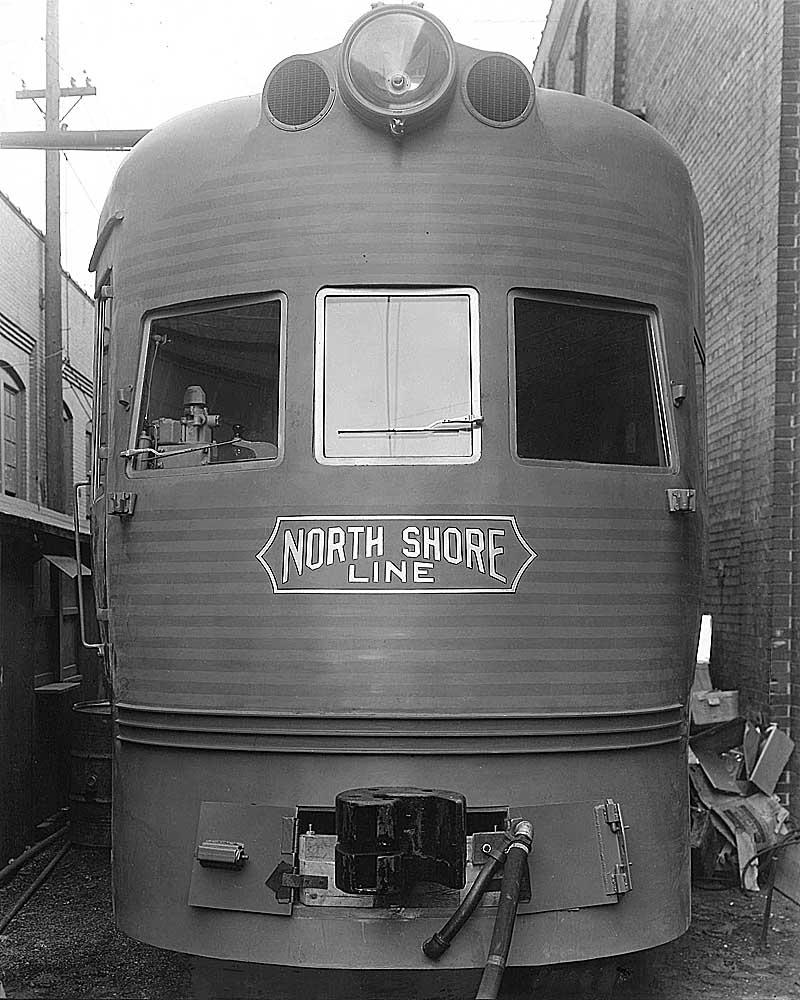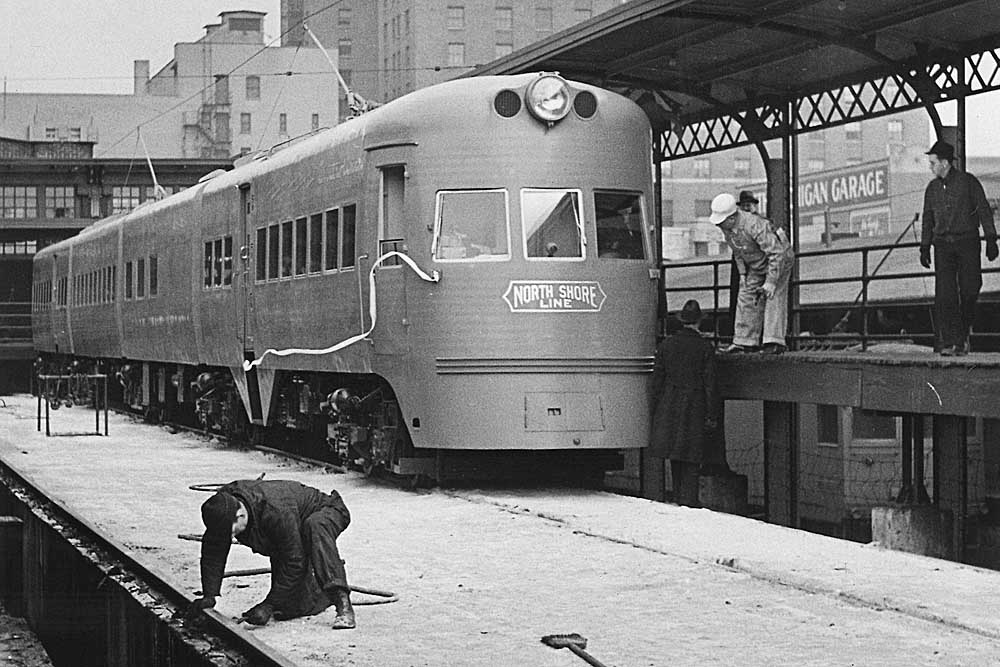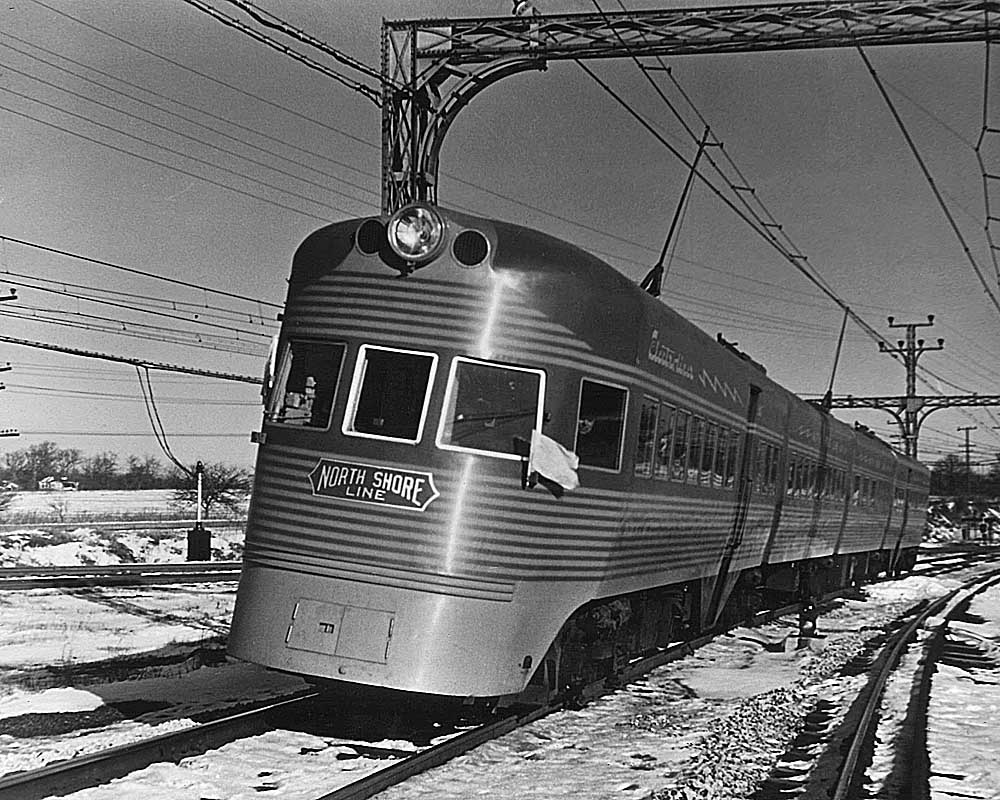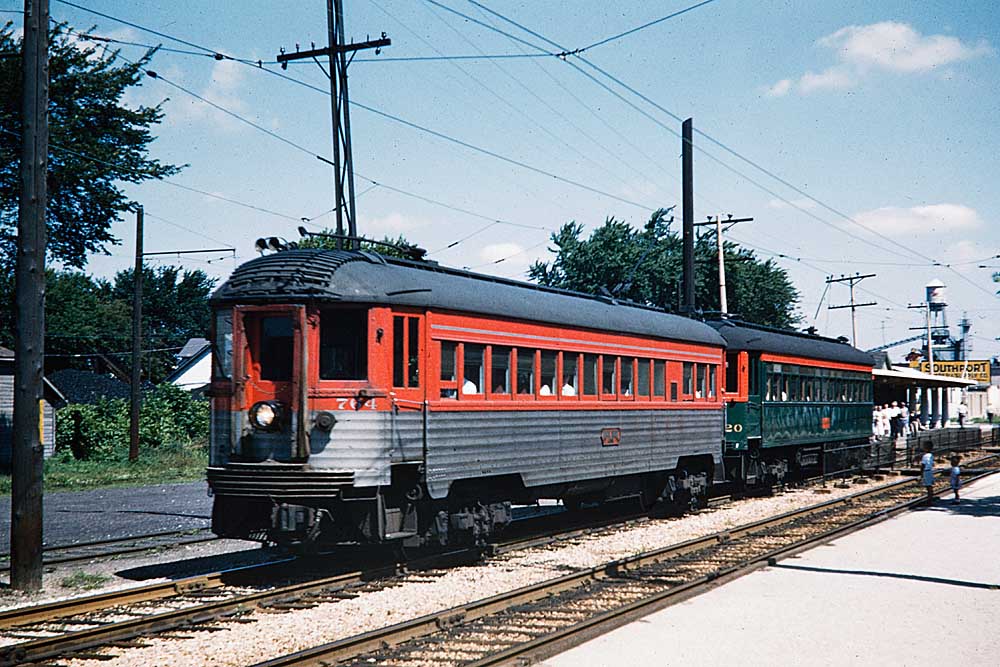“America’s Fastest Interurban” handled passengers and freight
Chicago North Shore & Milwaukee equipment set it apart from other electric interurban lines. Please enjoy this photo gallery selected from files in Kalmbach Media‘s David P. Morgan Library.

This 0-4-4T No. 165 and trailer car 103 were used for the opening of the Libertyville Branch. The locomotive was used by the contractor in building the line and then for about three months before electrical power was connected. L. B. Herrin photo


North Shore freight motors 209, 210, 211, and 212 rest on a siding near Great Lakes, Ill. These cars handled many shipments of seabags and belongings of sailors at Naval Station Great Lakes north of Chicago. D. Allen Bauer photo


Nose of the most famous Chicago North Shore & Milwaukee equipment: a streamlined Electroliner set built by St. Louis Car Co. in 1940. Classic Trains collection


A new Electroliner set is shown with H. A. Otis, right, equipment engineer for the North Shore, and G. R. Purifoy, transportation engineer at Westinghouse. The two trains were delivered by St. Louis Car Co. in 1941.


A new Electroliner set rests at the Milwaukee station in 1941. The Milwaukee station was at 6th and Clybourn downtown. Linn H. Westcott photo


An Electroliner, the newest Chicago North Shore & Milwaukee equipment at the time, races along its Chicago-Milwaukee route in 1941. Charles E. Keevil photo


Bedded down in the south yard of Highwood Shops after North Shore’s abandonment are Electroliners 802-801 (foreground) and 804-803. Behind the streamliners are a cumulative 6,728,361 miles. John D. Horachek photo


Interurban cars 764-720 pass Kenosha, Wis., southbound in August 1959. The cars demonstrate two styles of paint applied to the Chicago North Shore & Milwaukee equipment. Brian M. Schmidt collection


Steeplecab electric 450 is a 40-ton model painted for predecessor Chicago & Milwaukee Electric Railroad. Note that it has a low-level trolley-type coupler for towing low-floor city cars. David Waddington collection


Freight motor 458 rests at Highwood Shops on June 2, 1962. It was built by Oregon Electric Railway in 1940 and came to the North Shore 1948. Operation of long trains necessitated the use of two trolley poles to accommodate the higher current draw. J. David Ingles photo, Brian M. Schmidt collection


Freight motor 456 works at Mundelein, Ill., in April 1961. Nos. 455-456 were dual power motors, drawing from overhead wire or onboard batteries to accommodate customers without trolley wires on their spurs. These were the North Shore’s heaviest two-truck motive power. Brian M. Schmidt collection

Each month since October 2019, Classic Trains editors have selected one Fallen Flag to honor. A Fallen Flag is a railroad whose name and heritage have succumbed to bankruptcy, merger, or abandonment, but whose memory lives on and well among railfans and historians today.
See all of our previous celebrations online.




































What a great article. Thanks. I lived in Chicago and rode the “North Shore” many times while stationed at the Navys Great Lakes Training Center.
One thing I wish the various authors of trolley articles would do is mention the voltage used by the particular line. The North Shore ran on 600 volts DC because it shared the Chicago Transit Authority tracks in the city and that’s what the CTA used. I know that modern electric trains use high voltage AC power but I would like to learn more about it.
Thanks, Larry Nielsen